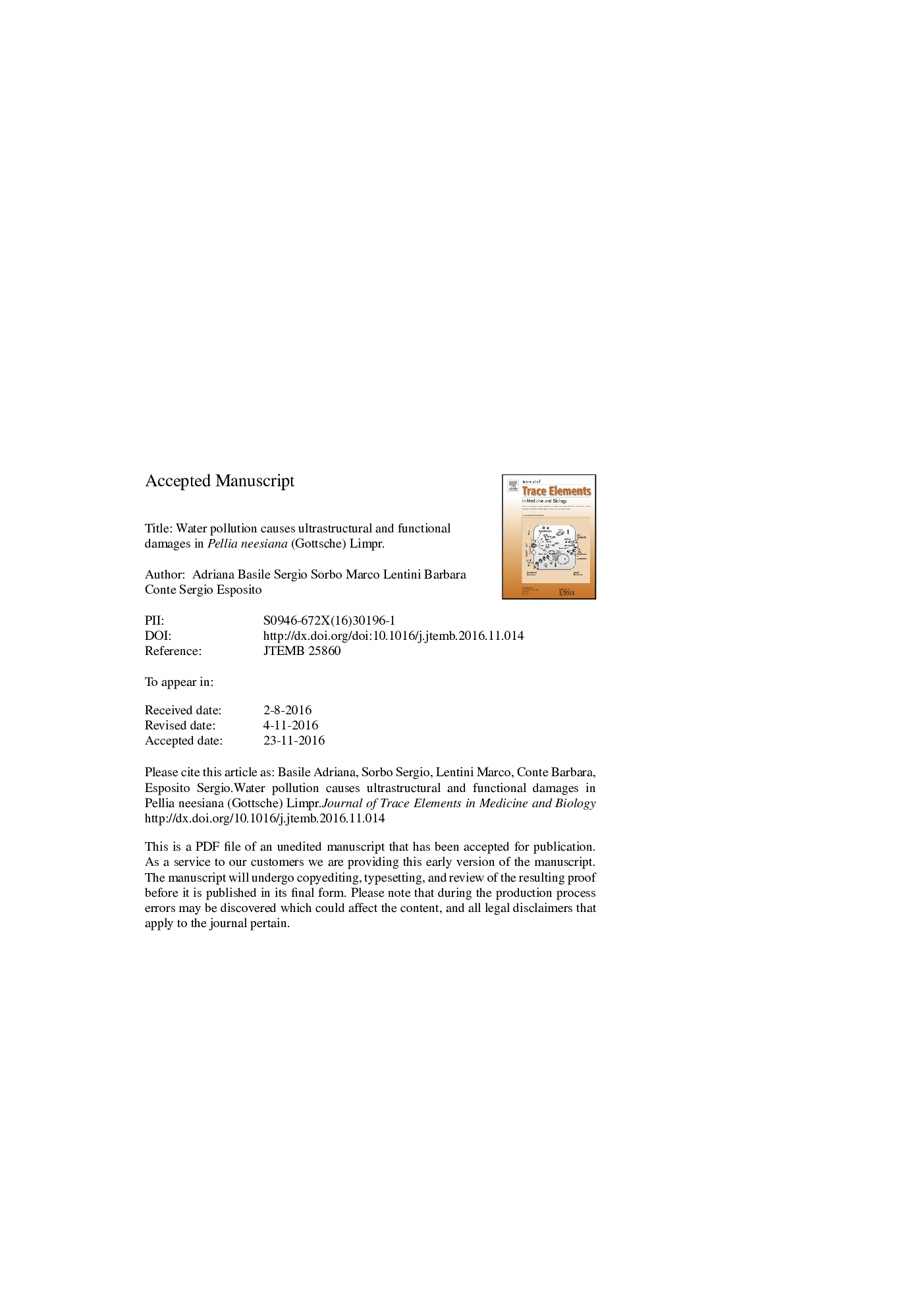| Article ID | Journal | Published Year | Pages | File Type |
|---|---|---|---|---|
| 5138756 | Journal of Trace Elements in Medicine and Biology | 2017 | 25 Pages |
Abstract
The aim of this work is to evaluate the effects of freshwater pollution in the heavily contaminated Sarno River (Campania, South Italy), using Pellia neesiana (Pelliaceae Metzgeriales) in order to propose this liverwort as a potential bioindicator, able to record the effects of water pollution, particularly the one related to metal (loid) contamination. Samples of P. neesiana in nylon bags were disposed floating for one week on the waters of Sarno River in three sites characterised by an increasing pollution. As control, some specimens were cultured in vitro in Cd- and Pb-added media, at the same pollutants' levels as measured in the most polluted site. P. neesiana cell ultrastructure was modified and severe alterations were observed in chloroplasts from samples exposed in the most polluted site, and Cd- and Pb-cultured samples. Concurrently, a strong increase in the occurrence of Heat shock proteins 70 (HSP70) was detected in gametophytes following the pollution gradient. In conclusion, ultrastructural damages can be directly related to HSP 70 occurrence in liverwort tissues, and proportional to the degree of pollution present in the river; thus our study suggests P. neesiana as an affordable bioindicator of freshwaters pollution.
Related Topics
Physical Sciences and Engineering
Chemistry
Analytical Chemistry
Authors
Adriana Basile, Sergio Sorbo, Marco Lentini, Barbara Conte, Sergio Esposito,
